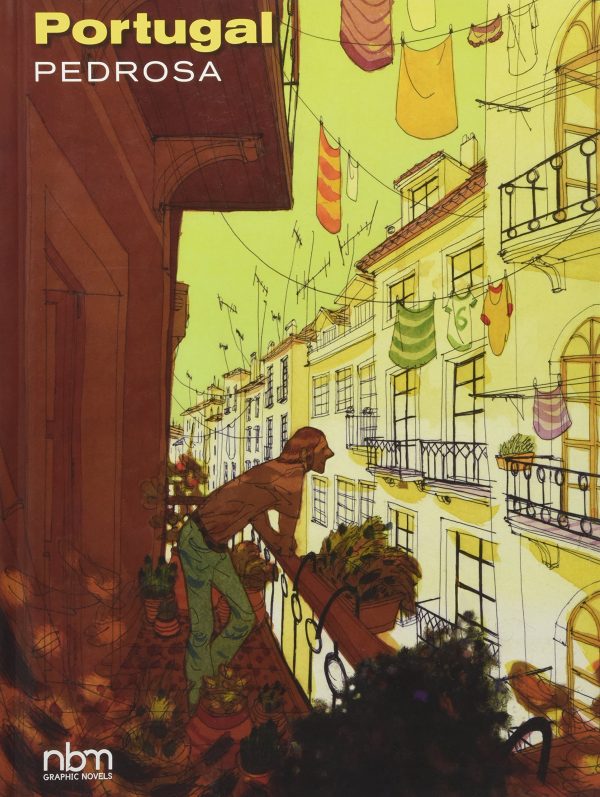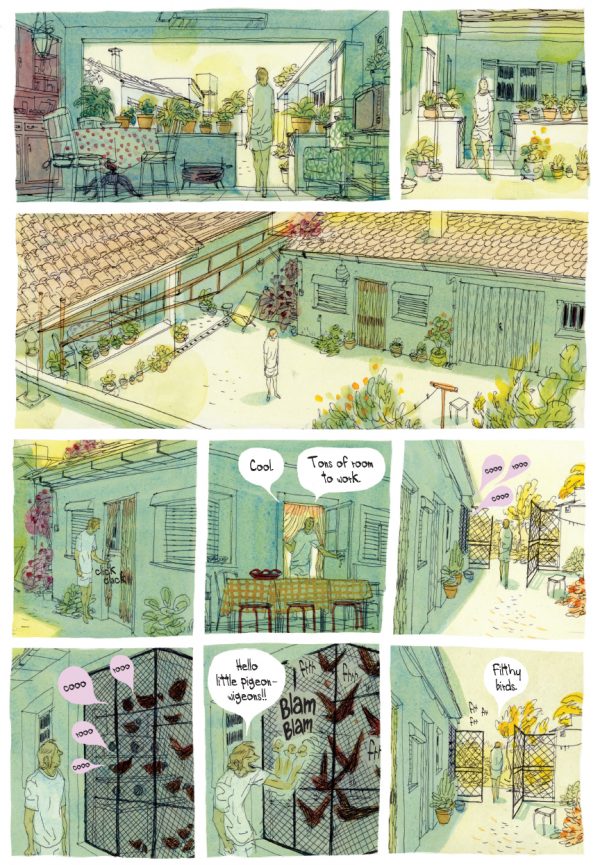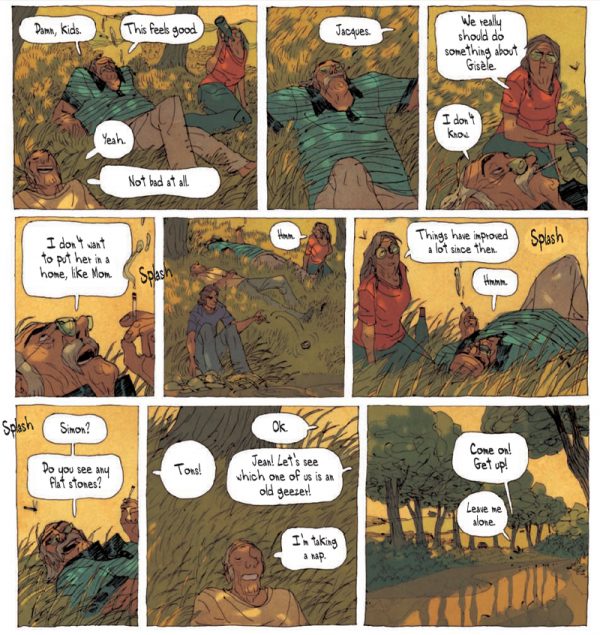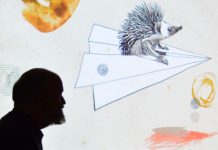In America, extended families that are defined by alienation seem to be the result of dysfunction more than anything else, but I’ve found that Europe has multiple instances born of migration, war, disease. Roots are cut by hardship and survival, with some of these strands leading to America.
In Portugal French comic book artist Cyril Pedrosa offers a version of this trope through the eyes of Simon Muchat, a cartoonist who begins to look back to his mysterious Portuguese ancestry and is soon swallowed up by it — in a good way.
Simon’s family has lived with a geographical schism for decades. His grandfather and great-uncle migrated to France as young men, but the great-uncle eventually returned to Portugal. Simon is feel displaced from his own life, incapable of following through with his girlfriend to nurture their relationship, and even at a distance from his career. A comics show appearance in Portugal brings some strange semblance of familiarity. When he goes to a cousin’s wedding shortly after, Simon becomes ensconced in family dynamics alongside his father, which brings up specters of an unhappy childhood alongside some more promising indications that answers might lie in the story of his grandfather.
It’s an obvious observation, and yet repeatedly worth making, that actions in a family’s past can define its present for decades, and so it is with Simon. And like so many of us, he is determined to get to the root of what has shaped his family so starkly. Earlier in the book, Simon is aimless, and this familial quest brings him purpose, but it’s too late for him to save certain aspects of his life. The new preoccupation, in many ways, pulls him further away from his concerns and into the swirl of his family dynamics, the province of ghosts that can no longer be healed. But Simon’s journey suggests that healing may not come in the obvious ways, nor even the ones that offer security in life.
The book is divided up into three sections that are defined by their moods. The first, which portrays Simon’s life with his girlfriend, is claustrophobic. The second, taking place at the cousins wedding and depicting family interaction, is chaotic. The third, capturing Simon’s visit to Portugal to investigate his grandfather’s life, is peaceful. The search becomes meditation.
Pedrosa is a master of the comics form. He pulls from his animation background in his work, but it never comes off as with so many animators who take to comics, where the panels have the style, but not the movement. Pedrosa utilizes all his ammunition — his color choice, the girth and frequency of his line work, the lettering of his dialogue, the structure of his panels, and even his overall art style — to fit the emotional setting as well as the physical one of any scene, and he skillfully shifts all of these to cover the evolution of those settings and the meaning of his characters’ placement within them. Inconsistency becomes a practical tool from Pedrosa’s pen to capture a personal journey, and yet the differences he utilizes become the threads that bind it all together.
Any book Pedrosa gives his time to becomes a tapestry of jaw-dropping beauty that I don’t believe many other cartoonists in the world quite match, but if it were all graphical beauty, it wouldn’t matter as much. Pedrosa has a way of matching what you see with what you feel and what you think in his stories, and in Portugal, he’s especially effective. It’s a meditative but also a dazzling emotional journey for the reader as well as Simon, a parable of finding oneself within what already exists but is not known, of seizing your identity through what came before you and your effort to connect the lines between yourself and everything else.











Have to agree re Pedrosa’s art just from those panels previewed. I could look at those environments he creates just for a long time.
Pedrosa is nominated in the Best Painter category in this year’s Eisner Awards for “Portugal.”
I discovered Pedrosa earlier this year when I found ‘Three Shadows’ in the library – his art is amazing. I’ll have to find a copy of ‘Portugal’ and see if his storytelling hand is as deft as it was with ‘Three Shadows’ (which I highly recommend, for story and art but especially for the art).
Comments are closed.